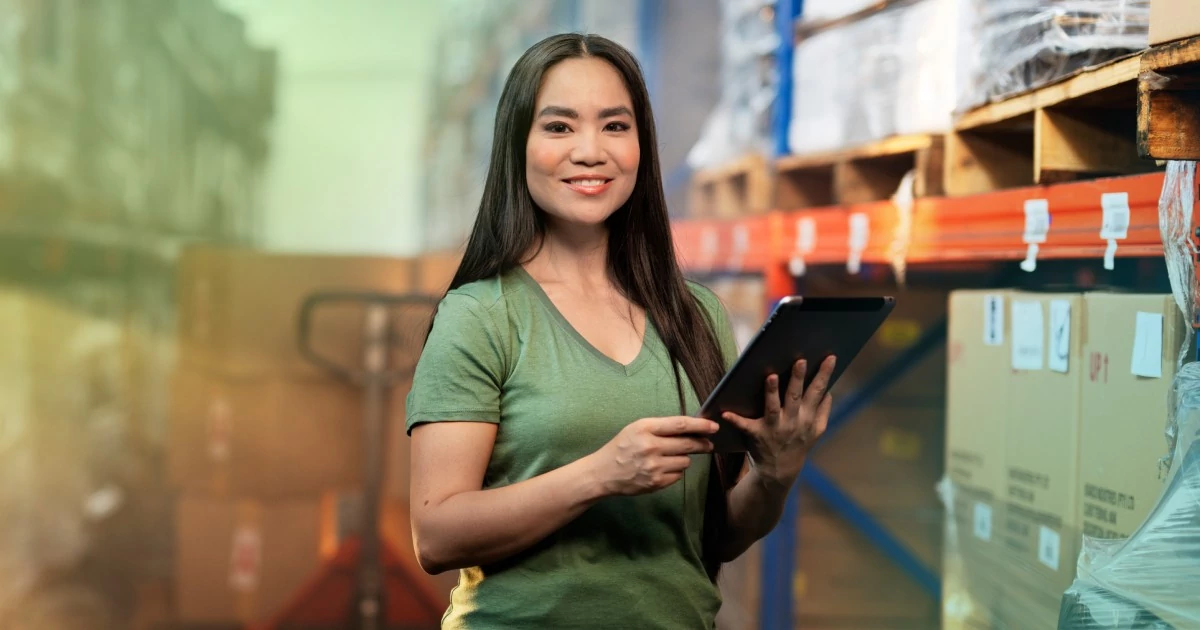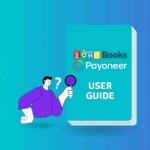HomeResourcesAccount PayableAccount Payable
The SEA Exporters’ Guide to Cross Border Payments
Hoping to expand your B2B and e-commerce business? Consider South-East Asia’s fastest-growing markets. Some ASEAN countries are outperforming on global trade. This article covers the growth and challenges of ASEAN trade, and how ecommerce businesses have overcome the obstacles.

Cross-border payment lessons from ASEAN’s prominent 6-figure B2B wholesale exporters
ASEAN overperforming on B2B trade and e-commerce
We are in the post-pandemic era of business re-imagination, and global trade is demonstrating its ongoing resilience.
2021 was a banner year for the global economy, with imports and exports recovering beyond 2019 levels. But after a dramatic initial rebound, 2022 saw global trade slow down. The first half of 2022 saw global trade continue on the upwards trajectory set in 2021, when global merchandise exports and imports surpassed pre-pandemic (2019) levels, with nominal growth of 24.6% and 23.8%, respectively. However, the second of 2022 saw growth turn negative. Q3 2022 saw trade in goods decline by 1% relative to the previous quarter. The year ended with overall trade volume growth of 2.7%, which was nonetheless still stronger than worst case scenarios and within the range predicted by the WTO. Meanwhile, due in part to inflated global commodity prices, word trade value rose 12% to $25.3 trillion in 2022.
Asia and the Pacific saw a similar drop in merchandise trade, with their shares of global nominal exports and imports deteriorating slightly to 39.4% and 35.8% respectively, together totalling $19 trillion in 2022. However, this masks considerable subregional variation, with South-East Asia continuing to log strong positive real exports and import growth, while South and South-West Asia and the Pacific subregion saw more modest export and import growth, and all other subregions presented negative growth.
In 2023, the slowdown in global merchandise trade is expected to continue and worsen, due to geopolitical frictions, ongoing inflation, and lower global demand. Growth rates for trade and output averaged 2.6% and 2.7% respectively for the past 12 years, but are likely to be well below that in 2023. Global merchandise trade volumes are predicted to grow just 1.7% in 2023, but the longer-term outlook is more positive, with trade volumes picking up to 3.2% in 2024.
New investments and trade corridors are emerging to boost regional trade and growth.
- In May 2022, the World Bank’s Board of Executive Directors also approved the $132 million Southeast Asia Regional Economic Corridor and Connectivity Project, which will improve climate resilient transport connectivity and regional trade along an east-west corridor through northern Lao PDR.
- China is also promoting the New Western Land-Sea Corridor that would connect major inland cities in southwestern China to ASEAN economies and boost socioeconomic development and trade in the region. Cargo from inland China can be transported to the border and then shipped to ASEAN economies and then on to other parts of the world. Imports can also use the route to enter China.
- Bangladesh recently announced plans to set up over 100 special economic zones by 2030.
On the digital behaviours front, COVID-19 and the increased accessibility and affordability of mobile devices and data has seemingly changed online shopping behaviours for good for B2C or B2B, creating an excellent opportunity for companies to scale to new markets at lower costs, and get paid easily across borders.
Prior to the pandemic, research firm Frost & Sullivan had predicted that global B2B e-commerce sales would reach over US$6.6 trillion this year, surpassing that of B2C sales, valued at US$3.2 trillion in the same period. Asia continues to lead the predicted growth in the e-commerce space, making this the third year in a row, and will see retail e-commerce sales rise by 18.6% in 2023, compared with just 8.9% worldwide. Within South-East Asia, Indonesia, Malaysia, the Philippines, Thailand, and Vietnam are seeing the most rapid growth, making up 5 of the top 10 fastest-growing global e-commerce markets. South-east Asia’s e-commerce market is projected to triple between 2022 and 2026, to reach approximately $230 billion in gross merchandise volume, growing at a CAGR of 22%.
Backed by government support and rising mobile penetration in India and Southeast Asia, B2B e-commerce is flourishing in the region, and led by competitive pricing, Asian-made products continue to be in demand in every corner of the globe.
The engine of international trade is predicted to shift away from the West, with South Asia becoming the fastest-growing export region. This is largely due to strong regional trade agreements, like the recent free trade agreement between India and the UAE. 13 key markets are forecast to reach a combined total trade value of $19.7 trillion by 2030, with China, India, and South Korea heading the list by volume.
While China remains top of mind when the topic of Asian business comes up, ASEAN countries (Thailand, the Philippines, Brunei, Cambodia, Indonesia, Vietnam, Laos, and Singapore) present an attractive and accessible market opportunity. These countries have a combined GDP of US$2.55 trillion and are predicted to become the world’s fourth-largest economy by 2050 – outgrowing the European Union.
The accelerated globalization has also led to the emergence of new players who are stepping in to assume the roles of traditional intermediaries, such as Udaan in India, connecting buyers and sellers on technology-enabled platforms. With increased demand from traders at both ends of the supply chain, this startup has been valued at more than $1 billion in just 26 months.
In other markets where intermediaries are in plenty, the opportunity lies in ensuring relevant value-added services, as is done by Vietnam’s largest B2B eCommerce platform, Telio.
They are proliferating by working on areas such as pricing transparency, reliable goods delivery, and streamlining of operations.
Key challenges for B2B exporters in SEA countries
In the face of this massive opportunity, barriers still exist that are preventing ASEAN from reaching its trade potential.
The primary issues that are causing friction for global trade growth include geopolitical concerns and tensions, unpredictable and high energy and commodity prices, ongoing inflation, and poor infrastructure. At the same time, they are struggling with continued supply chain disruptions and poor access to cross-border payment solutions.
Let’s take a look at some of these barriers in detail.
Poor Infrastructure Clogged ports, bad roads, overextended railways, shortage of containers, and unreliable shipping continued through 2022 and are still ongoing.
Access to credit According to World Bank reports, finance constraints are the second most cited obstacle to growth for small businesses. Complex procedures, changing regulations, lack of information, and high process costs mean that many companies don’t get the credit financing they need on time.
Supply chain challenges The supply chain challenges that started in 2020 will continue to take a toll on trade in 2023, exacerbated by the impact of the Russian war in Ukraine, which has pushed up costs of fuel and disrupted access to certain key commodities. Global political challenges, trade wars, and other economic uncertainties mean a lack of clarity on how things will progress.
Global inflation Regions from the US to the EU, Argentina, Africa, and elsewhere are recording high inflation figures. According to the UN, ongoing supply chain constraints are behind much of this development.
Payment Challenges One of the biggest challenges exporters continue to face are high fees for receiving smaller payments (especially for samples) using cross-border payment services. The difficulty in getting approved for a merchant (CC) account with traditional banks or requests for receiving accounts is another issue that restricts business growth and the speed with which businesses can accept payment. Traditional banks are also yet to provide adequate support and transparency when accepting SWIFT payments, causing black holes in communication and businesses not knowing why payments are stuck. Additionally, when sending out payouts to suppliers/vendors globally, high FX fees deter exporters from exploring global customer bases.
Success stories from SEA
2023 will be pivotal for exporters as they look to consolidate gains from early 2022, and grow globally despite a global slowdown. To specifically understand the impact of cross-border payment challenges, we spoke to two of the leading 6-figure B2B wholesale exporters in ASEAN to discuss their business and cross-border payment experiences, challenges, and how they overcame them.
Company background
Golf Shafts Asia was established in 2005 to give clubmakers, golf shop operators, and golf professionals fast and cost-effective access to an extensive range of golf shafts, heads, grips, and clubmaking accessories.
Today, Golf Shafts Asia (GSA Global) is the preferred distributor of premium golf shafts to Asian golf retailers, with over 400 golf retailers, golf stores, and golf businesses enjoying the low prices, fast on-time delivery, and superior customer service that our dealer network offers.
With a customer base across 30 countries spanning six continents, they currently bill most of their customers via online banking or cross-border payment platforms.
Payment Challenges & Solutions
With global payments come specific challenges, like high bank transfer fees. GSA Global wanted to find a partner that provided easy setup, outstanding customer service , and ongoing support to address these issues. They were also on the lookout for solutions that made it easier for their customers to make payments without paying bank fees.
After consideration, GSA Global switched to Payoneer and opted for the Local Receiving Accounts offering. Setting up an account was very easy and the customer service team was deeply connected to the unique challenges faced by exporters, ensuring GSA Global could confidently get paid from global customers.
Outcome
By switching to Payoneer payment solutions, they started seeing increased customer satisfaction, reduced payment processing times, and increased efficiency in order handling. They also overcame logistical and financial challenges in selling to countries worldwide.
Company background
Luxclusif is a tech and data driven B2B platform recently acquired by FARFETCH that enables both the sale and acquisition of second-hand luxury goods to/from auctions, retailers, e-commerce platforms, and stores worldwide.
They identified that the pre-owned Luxury trade in Japan was already very professionalized nine years ago, but domestic markets dominated the sales, leaving a huge opportunity to go global and export to where the demand was more significant, such as the US and EU.
Luxclusif went through 3 stages in these nine years: Traders > Providers > Enablers. As traders, they treated the items as commodities, simply trading for a competitive price. As providers, they started to incorporate tech and more product value through better curation, improved supply chain, and high-quality information and photos of the items. And finally, as enablers, they focused on Tech Solutions enabling the Marketplaces to integrate pre-owned on their business models (Second Life with FARFETCH, and Florentia Village).
They work with global clients such as FARFETCH (the UK and China), Selfridges (UK), Tradesy (US), and Hudson’s Bay (CD).
Payment Challenges and Solutions
Sending payment reminders was a real challenge to ensure timely payments of invoices, along with creating a system that could accept all types of multi-currency payments without any hassles.
They needed a payment solution that would provide convenience and flexibility to their customers and support their operational needs of selling worldwide – with the ability to charge customers in multiple currencies and countries. It would also need to simplify operational needs so Luxclusif could continue selling worldwide and receiving payments in multiple currencies and countries.
Luxclusif switched to Payoneer and started using the Receiving and Sending Funds offering.
Outcome
By switching to Payoneer, Luxclusif immediately recognized the flexibility in managing payments and enjoyed better service and convenience.
Critical lessons for other businesses
Selling to countries worldwide presents logistical and financial challenges that can be overcome by using the correct payment solutions. The secret lies in choosing the right partners. Before creating your payment system, look around and see the solutions that already exist in the market. Luxclusif, for instance, has essential partners in multiple areas – Logistics, Payment Solutions, Commercial, Operational, and Merchandise.
Navigating the global payment landscape with Payoneer
Payoneer’s Request a Payment service enables business owners to send payment requests and invoices to their international clients easily. It also provides safe and secure payments via credit card, eCheck, or local bank transfer. Payoneer’s payment processing fees are low, and currency exchange rates are high, giving business owners more local currency for their dollars, pounds, or euros.
Learn more about Payoneer’s Request a Payment service here.
Related resources
Latest articles
-
Zoho Books and Payoneer integration guide
Learn how to seamlessly integrate Payoneer with Zoho Books. Follow our step-by-step guide to connect your accounts, create invoices, and manage payments efficiently. Optimize your financial operations today!
-

ICT Industry Leader Predictions for the Tech Sector of Central Asia in 2024
The ICT sector of Central Asia is growing at an incredible rate. But what are the trends that will shape 2024? We sit down with 13 experts to find out.
-
How to register a company in Cyprus: A step-by-step guide
With its low tax rate and strategic location, Cyprus is well established as one of Europe’s top incorporation hubs. In this article, we lay out a step-by-step process for registering a company in Cyprus as well as the top benefits of doing so.
-
Kazakhstan payment landscape: The best ways to send and receive money internationally
The right payment solution for your business saves both time and money. In this infographic, we explore the major players in Kazakhstan’s payment ecosystem for international transfers.
-
Defying the odds: How Ukrainian businesses thrive during war
One year post-war, Ukraine’s businesses adapt and thrive amidst adversity. Entrepreneurs showcase resilience, reflecting national tenacity. Many diversify, venturing into e-commerce and digital realms. Despite hurdles, 44% of SMBs aim for growth, with 36% hiring. Their grit underscores Ukraine’s enduring spirit amid challenges.
-
How to Pay International Freelancers?
Interested in working with freelancers, worldwide? Making international payments to freelancers and independent contractors around the world doesn’t have to be a headache with Payoneer. Learn how to use Payoneer to pay overseas freelancers while saving on international transaction fees and without jumping through hoops.













